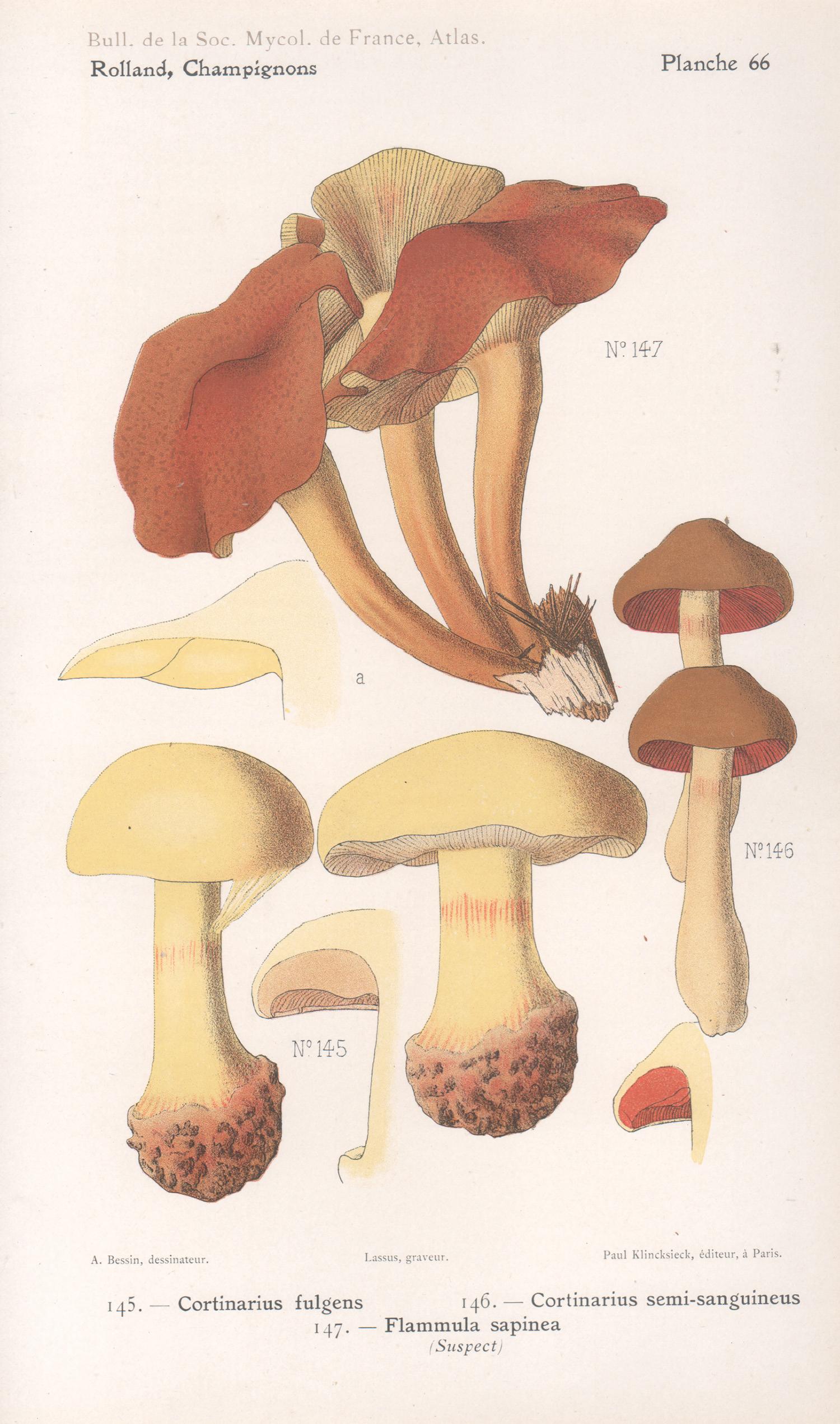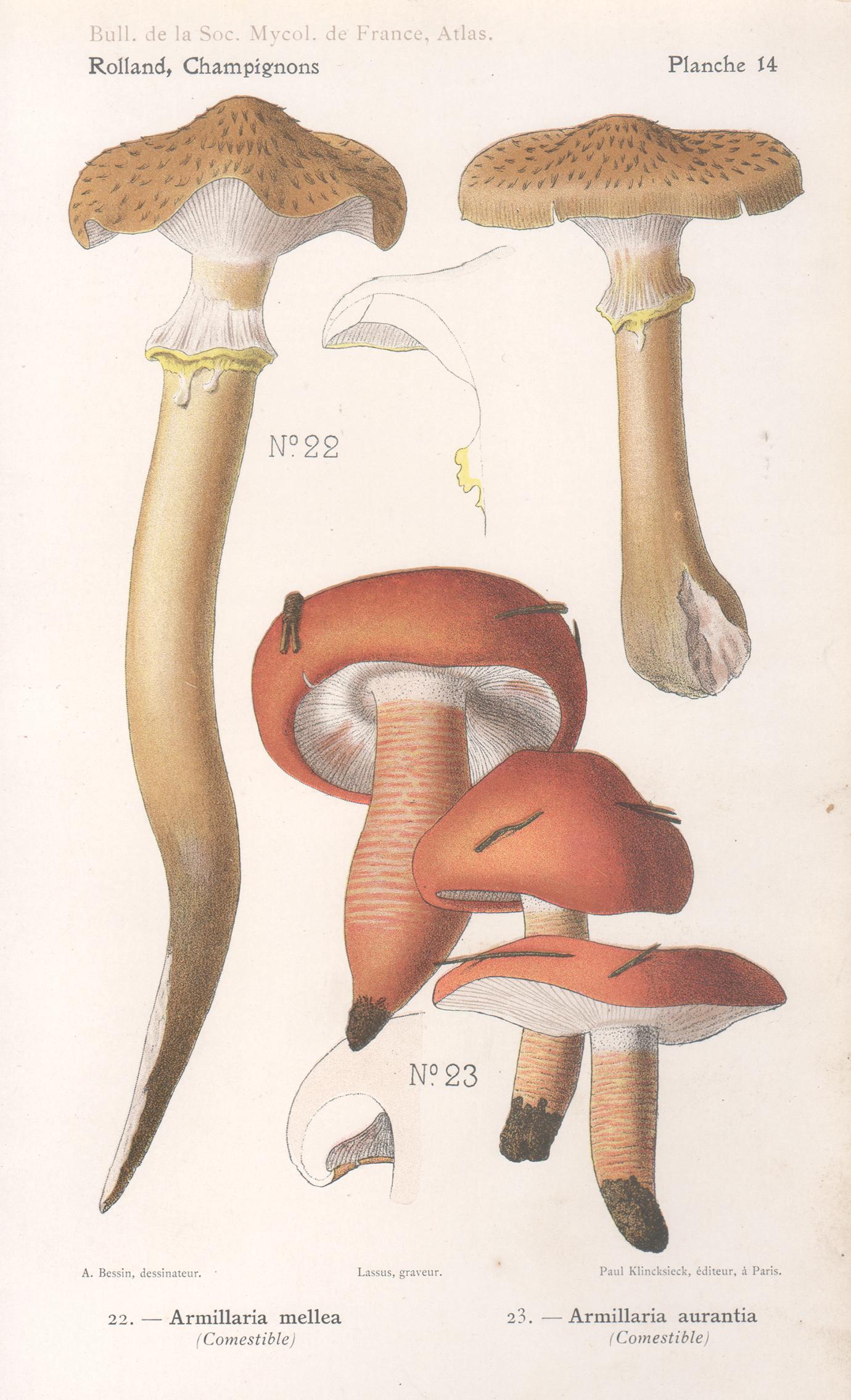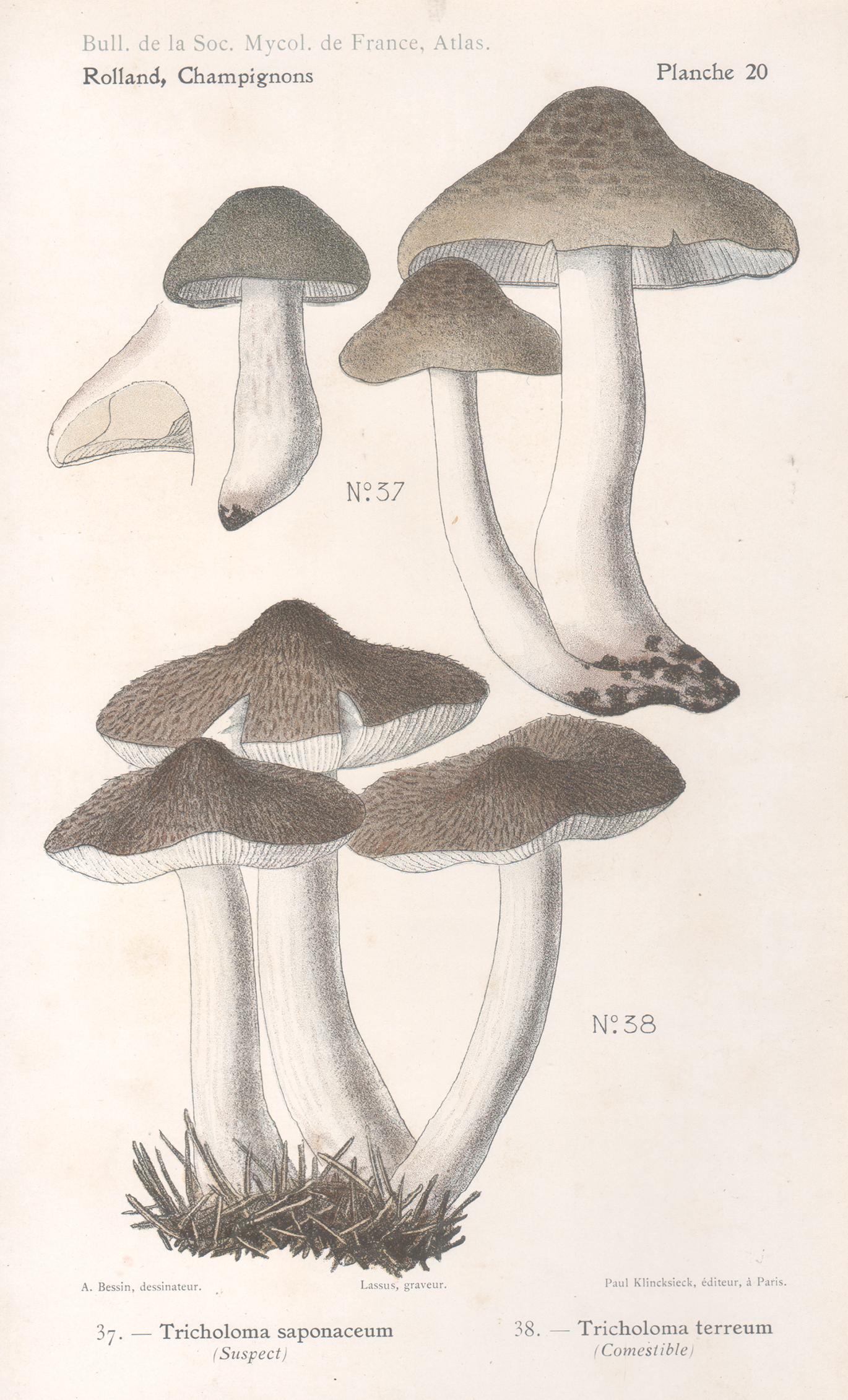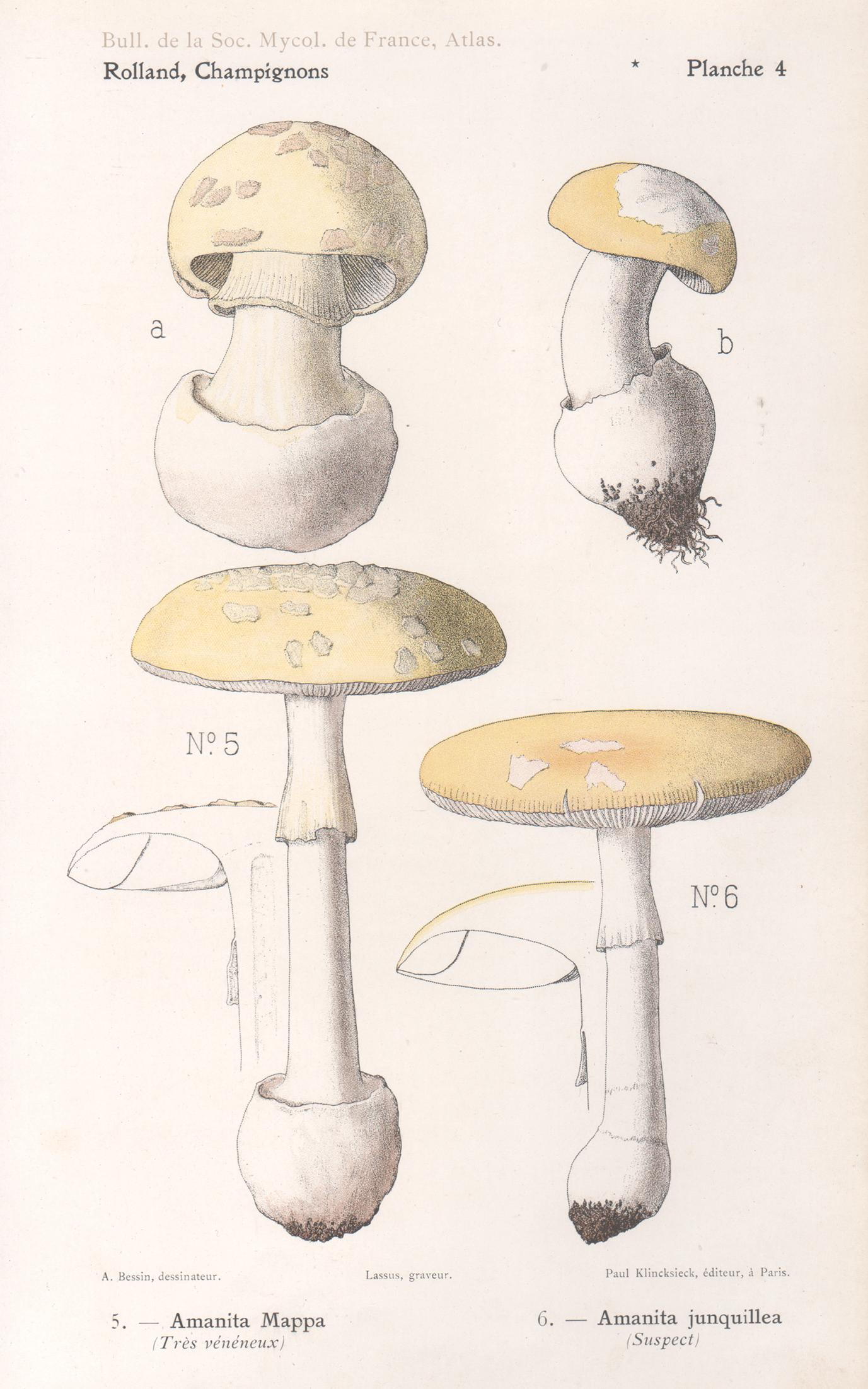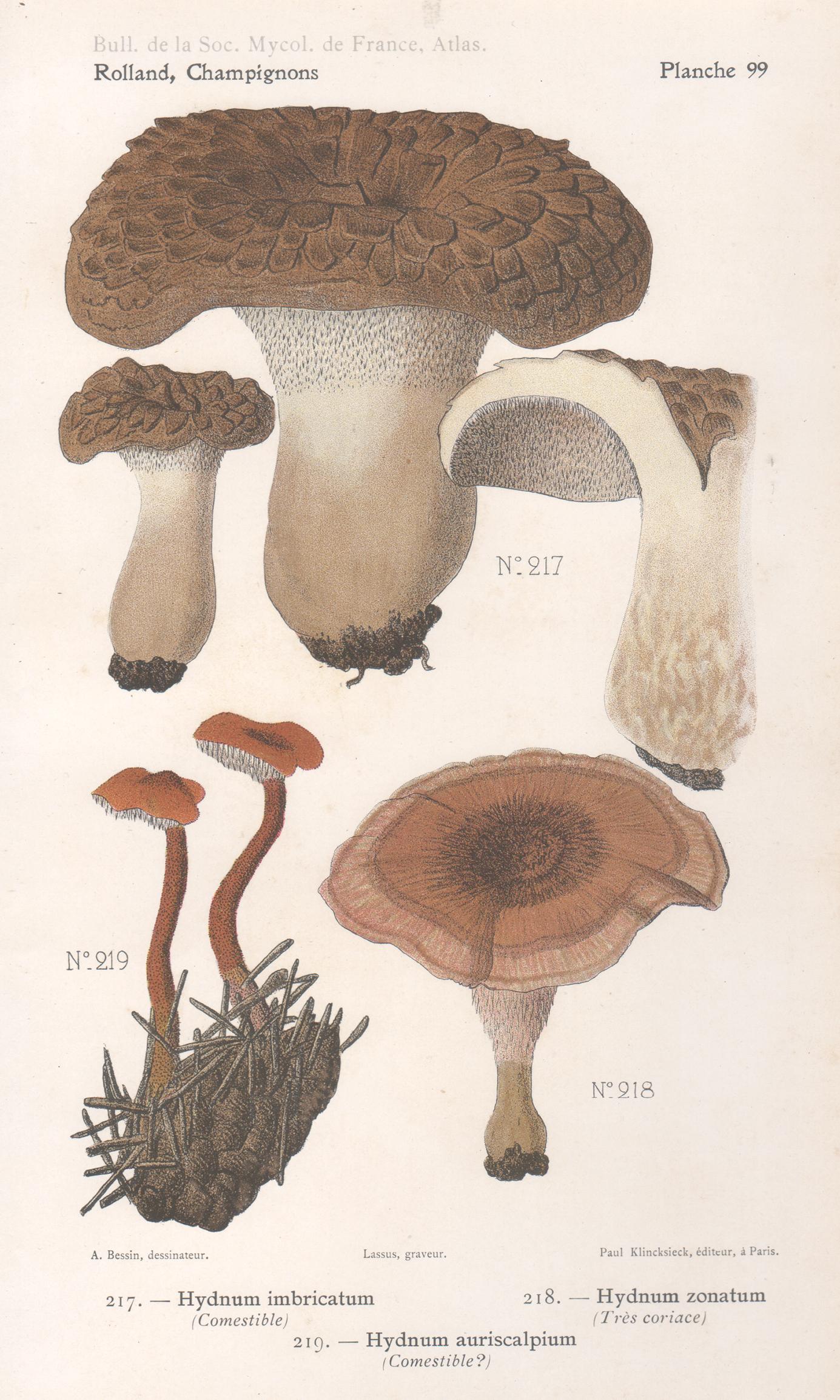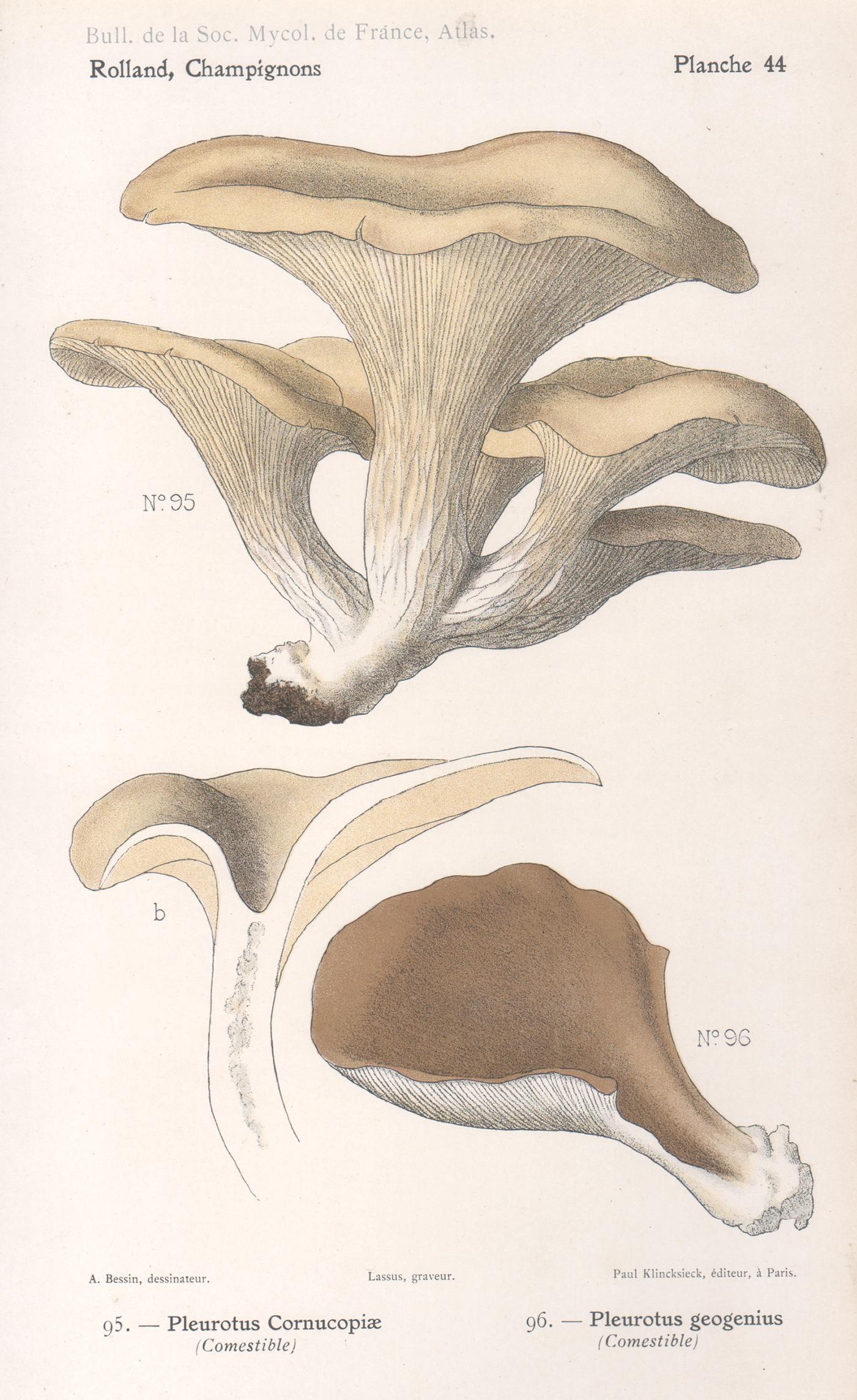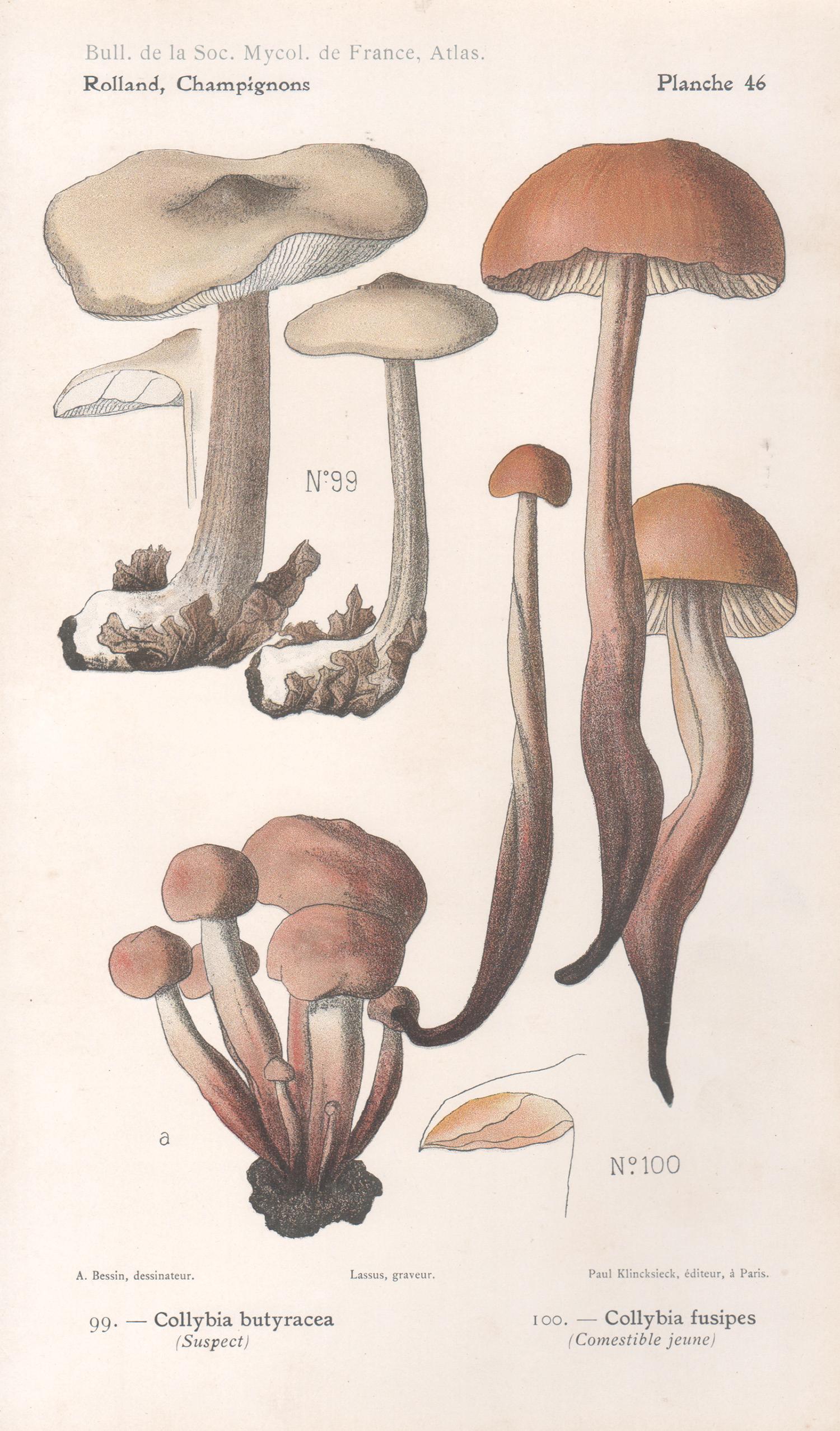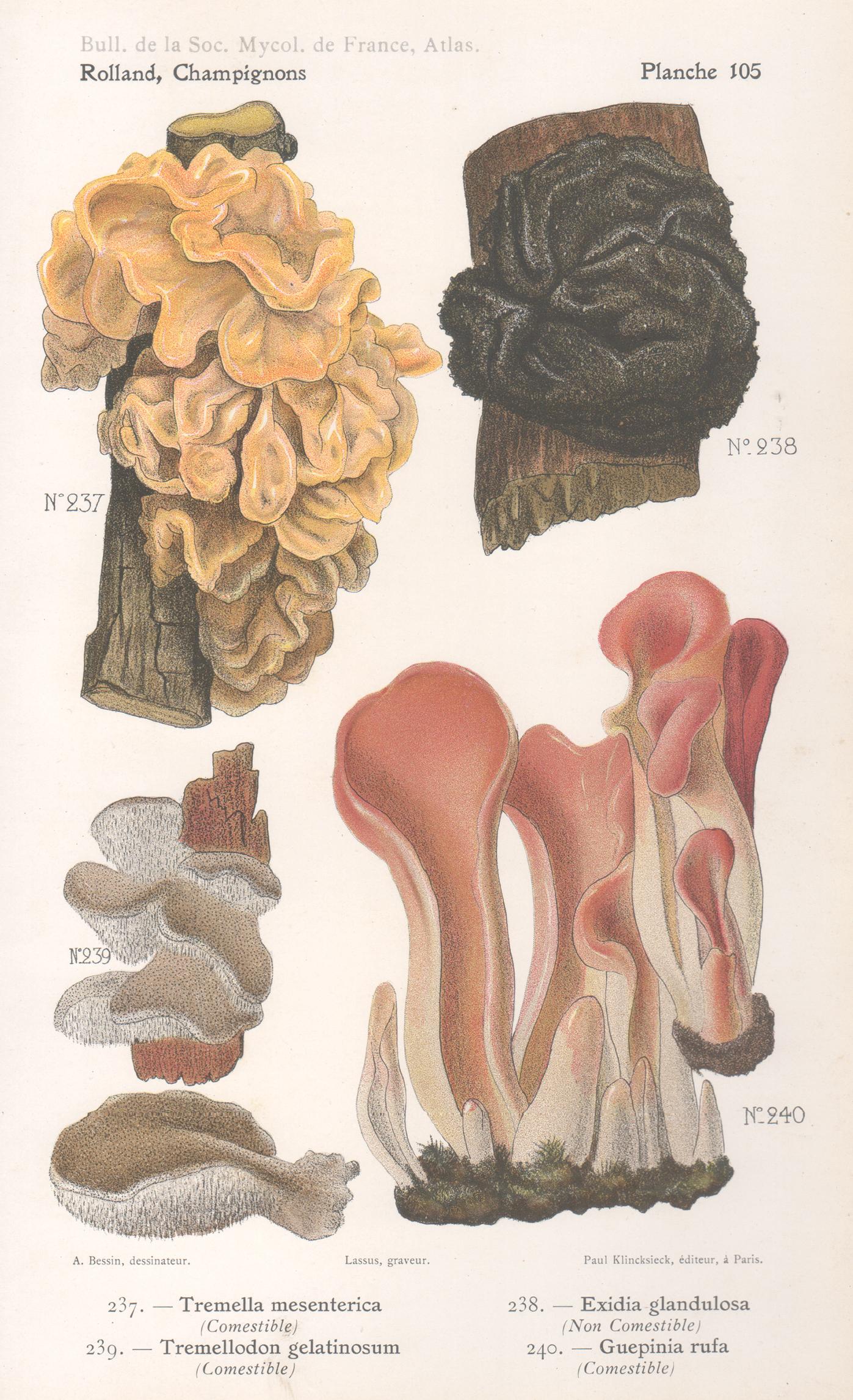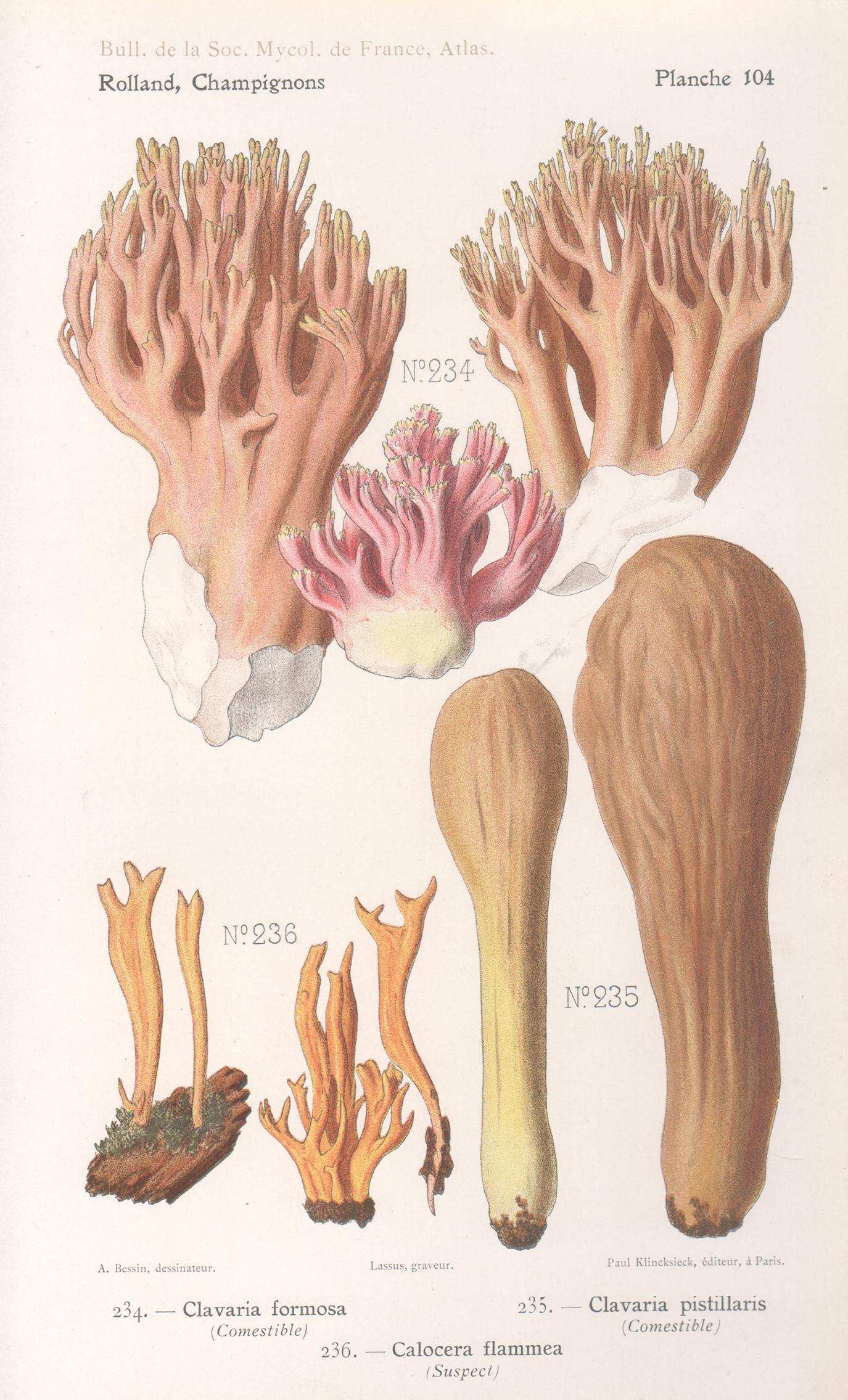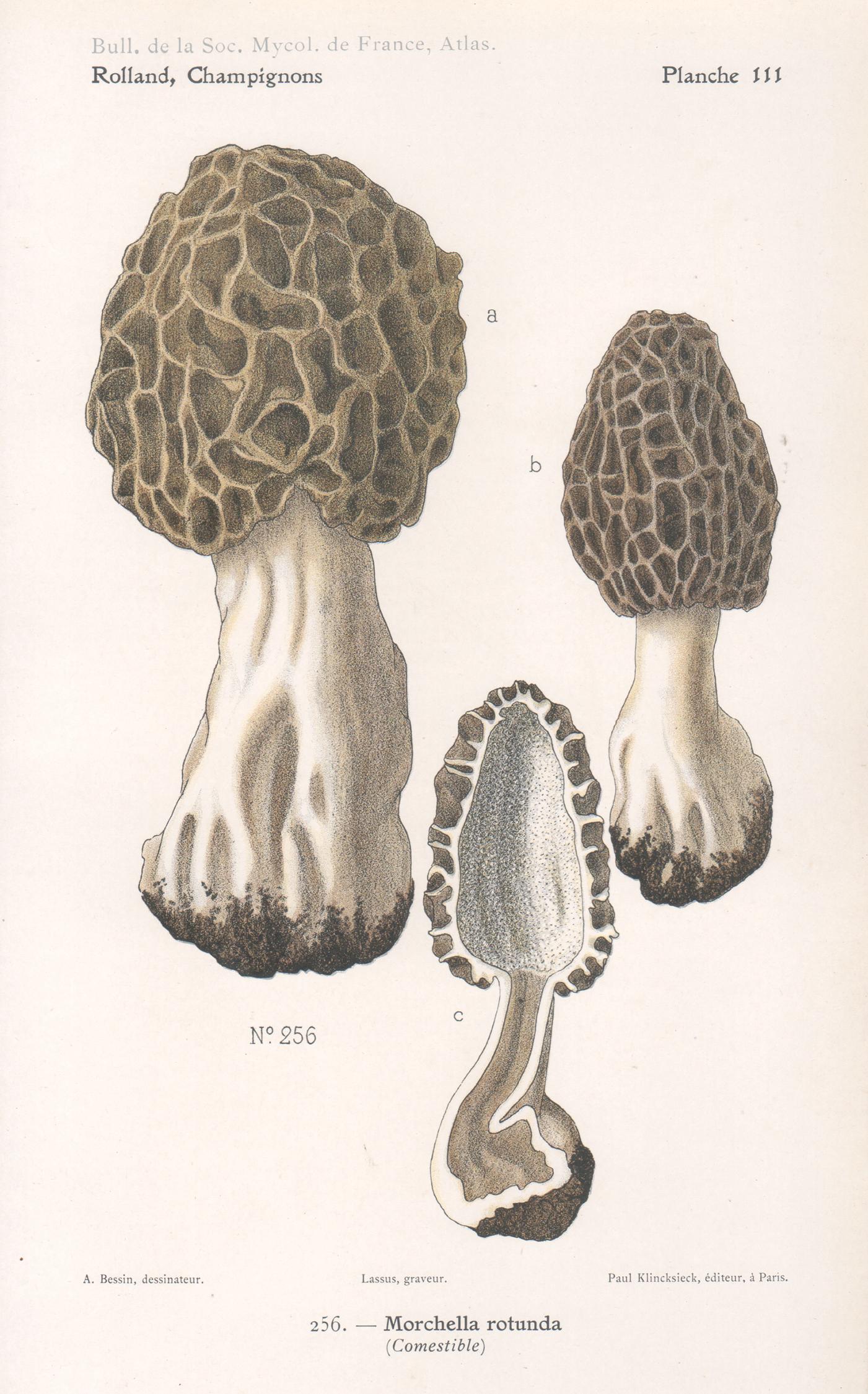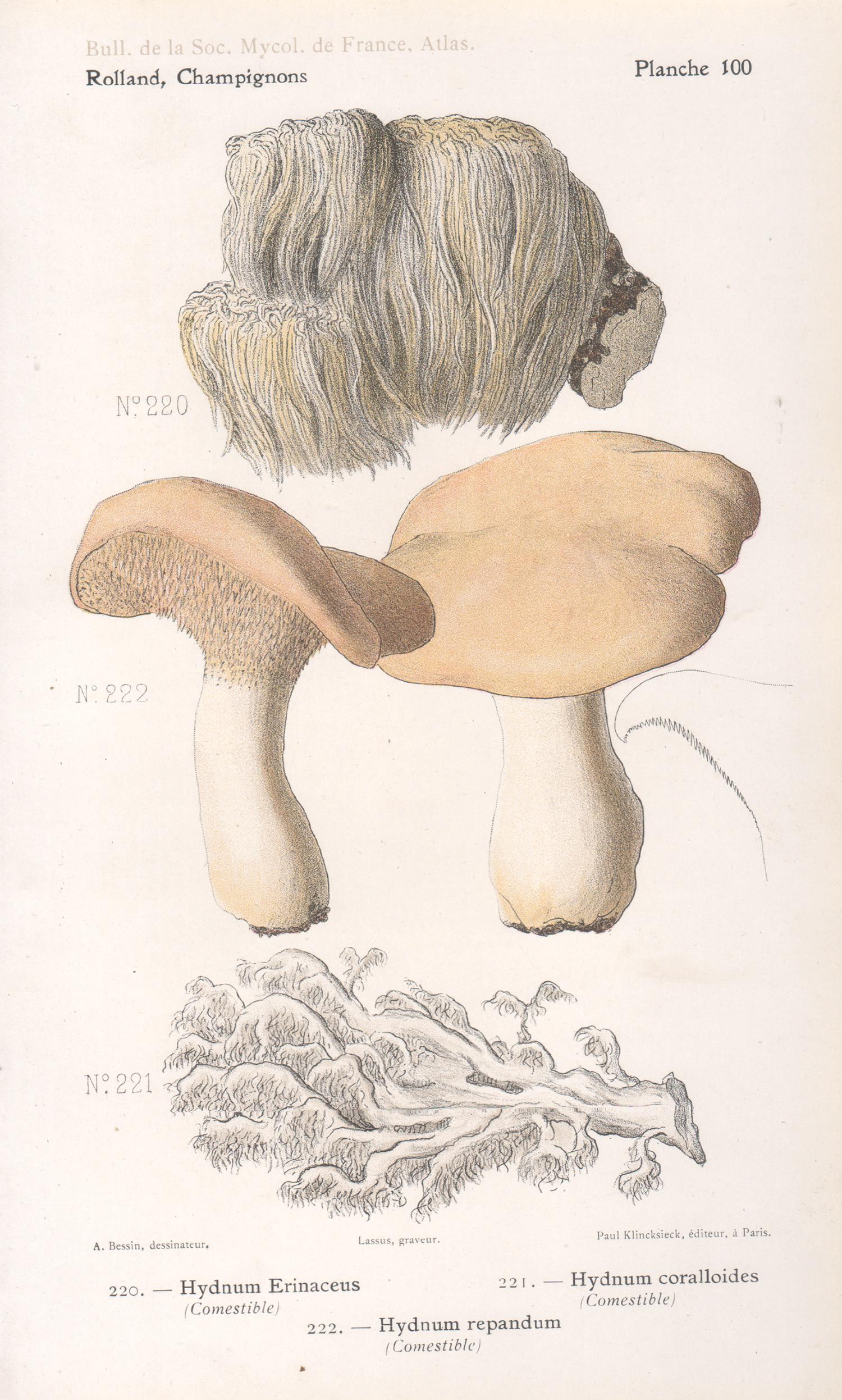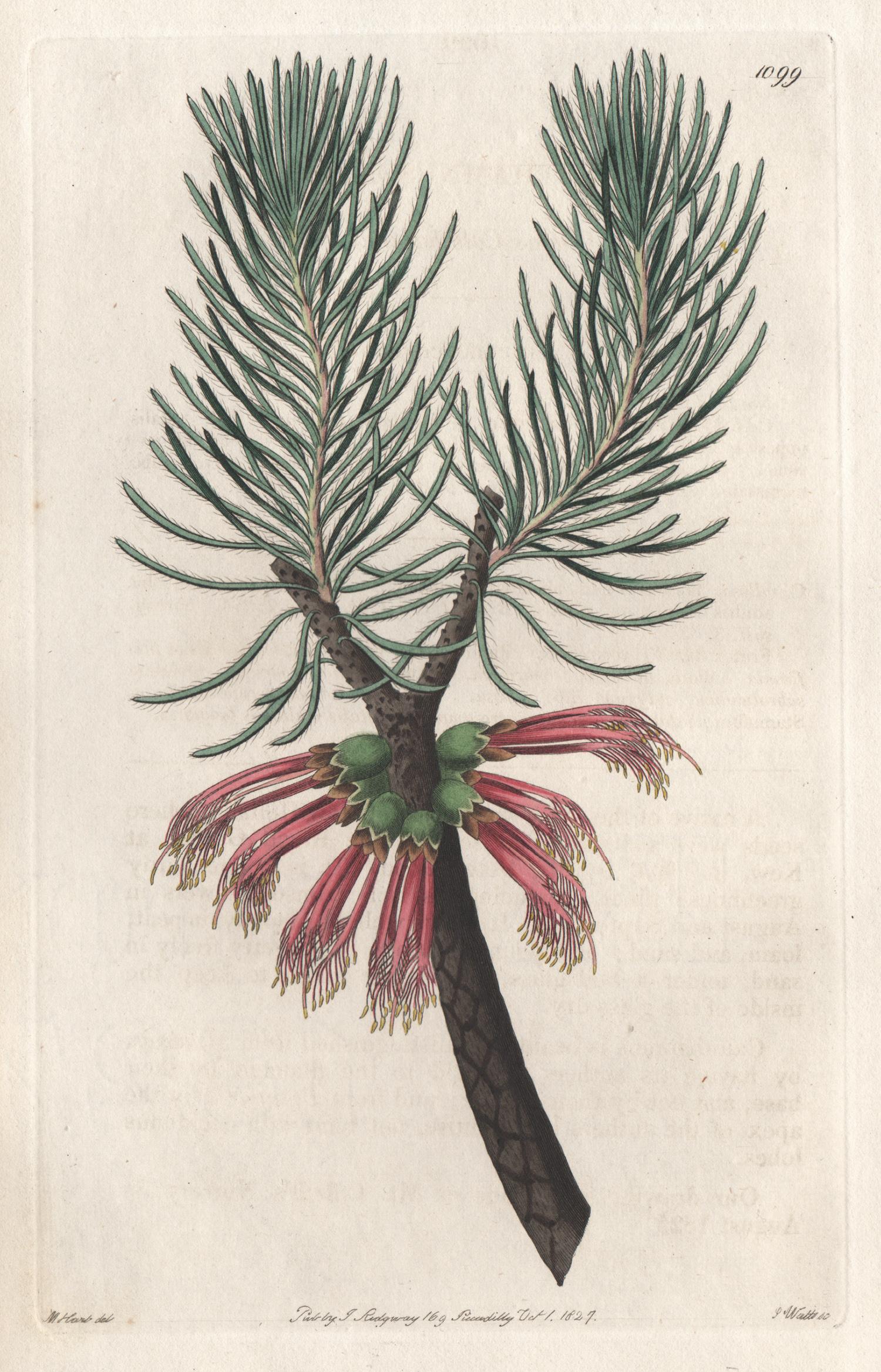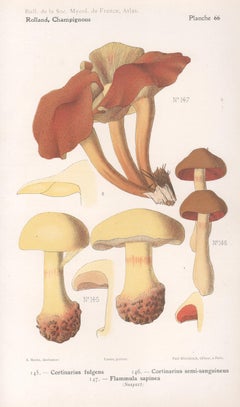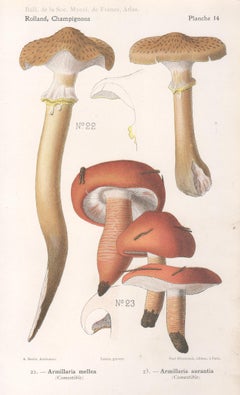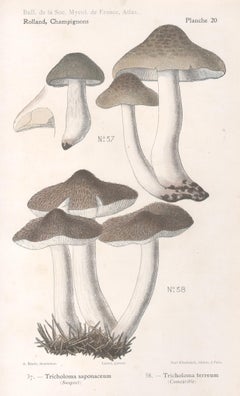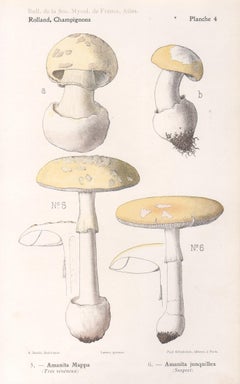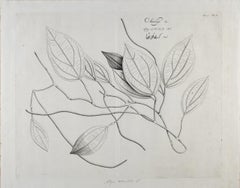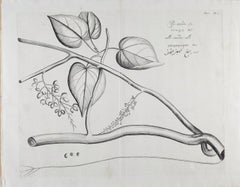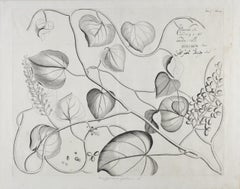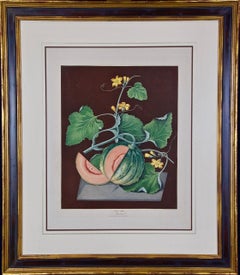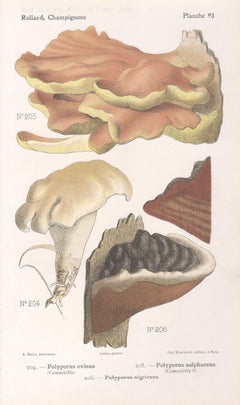
Champignons, French antique mushroom chromolithograph, 1910
View Similar Items
Want more images or videos?
Request additional images or videos from the seller
1 of 3
Lassus after Aimé BessinChampignons, French antique mushroom chromolithograph, 19101910
1910
About the Item
- Creator:Lassus after Aimé Bessin (French)
- Creation Year:1910
- Dimensions:Height: 9.26 in (23.5 cm)Width: 5.52 in (14 cm)
- Medium:
- Movement & Style:
- Period:
- Condition:One faint mark.
- Gallery Location:Melbourne, AU
- Reference Number:Seller: BT25871stDibs: LU124428405602
About the Seller
5.0
Vetted Professional Seller
Every seller passes strict standards for authenticity and reliability
Established in 2005
1stDibs seller since 2019
569 sales on 1stDibs
Typical response time: 1 hour
Authenticity Guarantee
In the unlikely event there’s an issue with an item’s authenticity, contact us within 1 year for a full refund. DetailsMoney-Back Guarantee
If your item is not as described, is damaged in transit, or does not arrive, contact us within 7 days for a full refund. Details24-Hour Cancellation
You have a 24-hour grace period in which to reconsider your purchase, with no questions asked.Vetted Professional Sellers
Our world-class sellers must adhere to strict standards for service and quality, maintaining the integrity of our listings.Price-Match Guarantee
If you find that a seller listed the same item for a lower price elsewhere, we’ll match it.Trusted Global Delivery
Our best-in-class carrier network provides specialized shipping options worldwide, including custom delivery.More From This Seller
View AllChampignons, French antique mushroom chromolithograph, 1910
Located in Melbourne, Victoria
'145. Cortinarius fulgens 146. Cortinarius semi-sanguines 147. Flammula sapinea' '
Antique French mushroom / fungi chromolithograph.
From "Atlas des champignons de France, Suisse et Belgique," an atlas of French, Swiss, and Belgian fungi, illustrated by chromolithographs from watercolours by the illustrator Aimé Bessin...
Category
Early 20th Century Naturalistic Still-life Prints
Materials
Engraving, Lithograph
Champignons, French antique mushroom chromolithograph, 1910
Located in Melbourne, Victoria
'22 Armillaria melee 23 Armillaria aurantia'
Antique French mushroom / fungi chromolithograph.
From "Atlas des champignons de France, Suisse et Belgique," an atlas of French, Swiss, and Belgian fungi, illustrated by chromolithographs from watercolours by the illustrator Aimé Bessin...
Category
Early 20th Century Naturalistic Still-life Prints
Materials
Engraving, Lithograph
Champignons, French antique mushroom chromolithograph, 1910
Located in Melbourne, Victoria
'37 Tricholoma saponaceum 38 Tricholoma terreum'
Antique French mushroom / fungi chromolithograph.
From "Atlas des champignons de France, Suisse et B...
Category
Early 20th Century Naturalistic Still-life Prints
Materials
Engraving, Lithograph
Champignons, French antique mushroom chromolithograph, 1910
Located in Melbourne, Victoria
'5 Amanita Mappa 6 Amanita junquillea'
Antique French mushroom / fungi chromolithograph.
From "Atlas des champignons de France, Suisse et Belgique," an atlas of French, Swiss, and Belgian fungi, illustrated by chromolithographs from watercolours by the illustrator Aimé Bessin...
Category
Early 20th Century Naturalistic Still-life Prints
Materials
Engraving, Lithograph
Champignons, French antique mushroom chromolithograph, 1910
Located in Melbourne, Victoria
'217 Hydnum imbricatum 218 Hydnum zonatum'
Antique French mushroom / fungi chromolithograph.
From "Atlas des champignons de France, Suisse et Belgique," an atlas of French, Swiss, and Belgian fungi, illustrated by chromolithographs from watercolours by the illustrator Aimé Bessin...
Category
Early 20th Century Naturalistic Still-life Prints
Materials
Engraving, Lithograph
Champignons, French antique mushroom chromolithograph, 1910
Located in Melbourne, Victoria
'95 Pleurotus Cornucopiae 96 Pleurotus geogenius'
Antique French mushroom / fungi chromolithograph.
From "Atlas des champignons de France, Suisse et Belgique," an atlas of French, Swiss, and Belgian fungi, illustrated by chromolithographs from watercolours by the illustrator Aimé Bessin...
Category
Early 20th Century Naturalistic Still-life Prints
Materials
Engraving, Lithograph
You May Also Like
Amolago (Aglaonema) Plant: 17th Century Botanical Engraving by H. van Rheede
Located in Alamo, CA
This is a rare 17th century engraving of a plant entitled "Amolago" by the Dutch botanist Hendrik van Rheede tot Drakenstein, plate 16 from his 'Hortus Indicus Malabaricus' (Garden of Malabar), published in Amsterdam in 1686 by Johann van Someren. The engraving depicts the Amolago plant, a large leafed plant, possibly corresponding to the present day aglaonema plant. Rheede's 19th century publication featured illustrations of exotic plants and fruits labelled with script in the upper right corner in Latin, Malay, Arabic, and Sanskrit. Hortus Indicus Malabaricus is believed to be the earliest comprehensive published work on the flora of Asia and the tropics. The 17th century treatise featured important illustrations of 740 plants of the region, including Indian medicinal plants.
The engraving is printed on 17th century laid, chain-linked paper. The sheet measures 14.75" high by 17.25" wide. There is a central fold, as issued. There are a few tiny spots and there is minimal irregularity of the left edge of the paper where the print was previously bound in the 17th century publication. The print is otherwise in very good condition.
There are additional Rheede botanical engravings from his 'Hortus Indicus Malabaricus' publication that are listed on my 1stdibs storefront and online website. These would make for an impressive display grouping. A discount is available for purchase of two or more of the prints.
Hendrik Adriaan van...
Category
Late 17th Century Naturalistic Landscape Prints
Materials
Engraving
Pee-amerdu Plant: A Rare 17th Century Botanical Engraving by H. van Rheede
Located in Alamo, CA
This is a rare 17th century engraving of a plant entitled "Pee-amerdu" by the Dutch botanist Hendrik van Rheede tot Drakenstein, plate 19 from his 'Hortus Indicus Malabaricus' (Garden of Malabar), published in Amsterdam in 1686 by Johann van Someren. The engraving depicts the Pee-amerdu plant, a large leafed plant climbing plant off the Malabar Coast in India. The plant is noted for its medicinal uses. It may be related to Tinospora species. Rheede's 19th century publication featured illustrations of exotic plants and fruits labelled with script in the upper right corner in Latin, Malay, Arabic, and Sanskrit. Hortus Indicus Malabaricus is believed to be the earliest comprehensive published work on the flora of Asia and the tropics. The 17th century treatise featured important illustrations of 740 plants of the region, including Indian medicinal plants.
The engraving is printed on 17th century laid, chain-linked watermarked paper. The sheet measures 14.88" high by 18.75" wide. There is a central fold, as issued. There are a few faint smudges, a spot in the upper margin and there is minimal irregularity of the left edge of the paper where the print was previously bound in the 17th century publication. The print is otherwise in very good condition.
There are additional Rheede botanical engravings from his 'Hortus Indicus Malabaricus' publication that are listed on my 1stdibs storefront and online website. These would make for an impressive display grouping. A discount is available for purchase of two or more of the prints.
Hendrik Adriaan van Rheede tot Drakenstein...
Category
Late 17th Century Naturalistic Landscape Prints
Materials
Engraving
Citamerdu (Amrita) Plant: 17th Century Botanical Engraving by Hendrik van Rheede
Located in Alamo, CA
This is a rare 17th century engraving of a plant entitled "Citamerdu" by the Dutch botanist Hendrik van Rheede tot Drakenstein, plate 21 from his 'Hortus Indicus Malabaricus' (Garden of Malabar), published in Amsterdam in 1686 by Johann van Someren. The engraving depicts the Citamerdu plant, also known as Tinospora cordifolia plant or Amrita and Guduchi. It is a deciduous plant with heart-shaped leaves, greenish flowers, and pea-shaped fruits. Rheede's 19th century publication featured illustrations of exotic plants and fruits labelled with script in the upper right corner in Latin, Malay, Arabic, and Sanskrit. Hortus Indicus Malabaricus is believed to be the earliest comprehensive published work on the flora of Asia and the tropics. The 17th century treatise featured important illustrations of 740 plants of the region, including Indian medicinal plants.
The engraving is printed on 17th century laid, chain-linked paper, watermarked with an elaborate crown design. The sheet measures 15.75" high by 18.75" wide. There is a central fold, as issued. There are a few small spots, but the print is otherwise in excellent condition.
There are additional Rheede botanical engravings from his 'Hortus Indicus Malabaricus' publication that are listed on my 1stdibs storefront and online website. These would make for an impressive display grouping. A discount is available for purchase of two or more of the prints.
Hendrik Adriaan van...
Category
Late 17th Century Naturalistic Landscape Prints
Materials
Engraving
"Amicua Melon" Hand Finished Color Engraving by George Brookshaw
By George Brookshaw
Located in Alamo, CA
This is a colored aquatint and stipple engraving finished by hand entitled "Amicua Melon", drawn and engraved by George Brookshaw and published in London in 1812 as plate LXXII in hi...
Category
Early 19th Century Naturalistic Still-life Prints
Materials
Engraving, Aquatint
THORNTON. Group of Carnations
By Dr. Robert John Thornton
Located in London, GB
Magnificent print by Robert John Thornton; aquatint and mezzotint, printed in colour and finished by hand, heightened with gum arabic, from The Temple of Flora.
[London 1799]
First state.
Thornton was a prolific medical author and became a Doctor of Medicine at St Andrews University and licentiate of the Royal College of Physicians. However, he is best remembered for this great botanical publication The Temple of Flora, which formed a part of the larger work - New Illustration of the sexual system of Linnaeus.
In 1797, he also began advertising for subscribers to his planned natural history publishing venture, which eventually comprised of 30 folio botanical plates. For these remarkable illustrations, he engaged the services of the leading artists and engravers of his day: Sir William Beechey, James Opie, Henry Raeburn, John Russell, Philip Reinagle...
Category
1790s Naturalistic Still-life Prints
Materials
Mezzotint, Aquatint, Handmade Paper, Engraving
BUCHOZ. A Group of Four Tulips
Located in London, GB
A Group of 4 hand-coloured engraved plates of tulips, in matching silver leaf frames. Dimensions: 34.6cm by 48.5cm.
A fine group of these rare flower plates, the complete volume of 40 being part of Le Jardin d'Eden, which was intended as the supplement to the Collection des Fleurs de la Chine & de l'Europe, first published in 1776.
[Paris 1781]
The second half of the eighteenth century saw a boom in natural history publications in France fuelled by such works as Buffon’s Histoire Naturelle. The accession of Louis XVI in 1774 was followed by a relaxation in the regulation of the book trade making it easier for authors to publish their own works. No other writer was to take such copious advantage of these two developments as Pierre-Joseph Buchoz (1731-1807), a French physician, lawyer and naturalist. His works are characterised by the beauty of the illustrations, and their rarity owing to the small size of the print runs.
The final tulip plate...
Category
1780s Naturalistic Still-life Prints
Materials
Engraving, Paper
